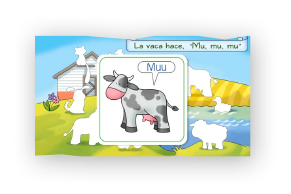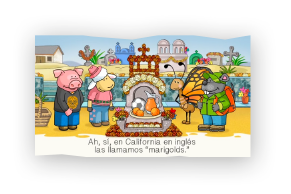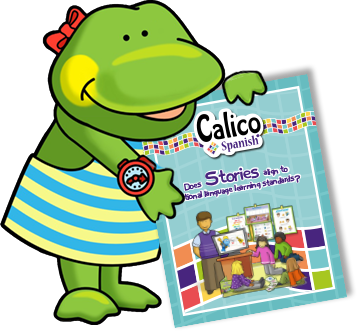Does the Calico Spanish curriculum align to the World Readiness Standards established by ACTFL?

 Learners communicate in Spanish on a variety of familiar topics, including self, family, activities, routines, health, family, and more.
Learners communicate in Spanish on a variety of familiar topics, including self, family, activities, routines, health, family, and more.
 Learners achieve intercultural competence standards while exploring inquiry-based culture capsules on topics like birthday celebrations and what homes look like.
Learners achieve intercultural competence standards while exploring inquiry-based culture capsules on topics like birthday celebrations and what homes look like.
 Learners connect their Spanish learning to other disciplines through activities like solving math problems in Spanish, investigating the demographics of Latin America, and tracing the migration of the monarch butterfly.
Learners connect their Spanish learning to other disciplines through activities like solving math problems in Spanish, investigating the demographics of Latin America, and tracing the migration of the monarch butterfly.
 Learners compare the Spanish language and cultures to their own in areas like using personalized pronouns and celebrating holidays.
Learners compare the Spanish language and cultures to their own in areas like using personalized pronouns and celebrating holidays.
 Every teacher’s guide suggests ways teachers can help learners connect with real Spanish-speaking communities as a key ingredient for long-term success.
Every teacher’s guide suggests ways teachers can help learners connect with real Spanish-speaking communities as a key ingredient for long-term success.
Does the Calico Spanish curriculum align to the NCSSFL-ACTFL Can-Do Statements that clarify the Communication Standard?

The Calico Spanish curriculum was developed to help children consistently perform in the Novice range on the topics presented.
Novice Interpretive Statement
I can identify the general topic and some basic information in both very familiar and everyday contexts by recognizing practiced or memorized words, phrases, and simple sentences in texts that are spoken, written, or signed.
By definition, Novice Mid learners are not able to even identify the general topic of an authentic (written or spoken) text. Believing that excessive use of authentic texts for teaching young learners does not build up this skill (i.e. continually not finding the topic doesn’t help a child learn to identify the topic), we provide young learners with rich learner material: engaging video stories, vibrant storybooks, music and more.
To assess whether learners meet the interpretive standard, they must interact with authentic sources. In the Calico Spanish curriculum, these interpretive assessments primarily happen in our culture capsules, so learners are meeting interpretive standards while showing intercultural competence:
Level B:
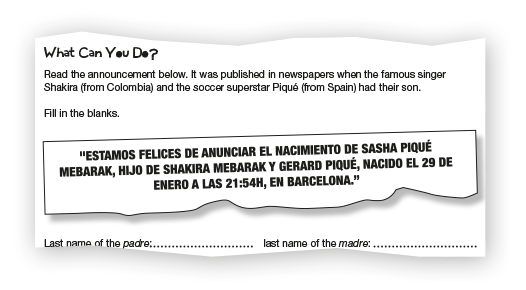
Level C:
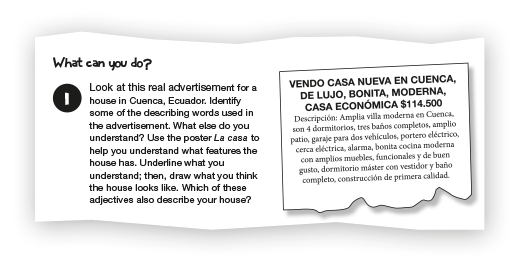
Novice Interpretive Statement
I can communicate in spontaneous spoken, written, or signed conversations on both very familiar and everyday topics, using a variety of practiced or memorized words, phrases, simple sentences, and questions.
The Calico Spanish curriculum is intended to help learners build conversational skills so they can speak real Spanish to real people. Video stories include a target dialogue where characters interact to accomplish skills like finding out what someone’s name is, talking about likes and dislikes, and asking what someone wants to eat or drink. The goal is that young learners will internalize this language and be able to accomplish these skills, too.
Level B:
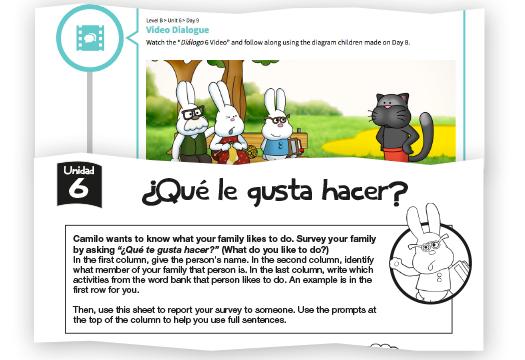
Level D:
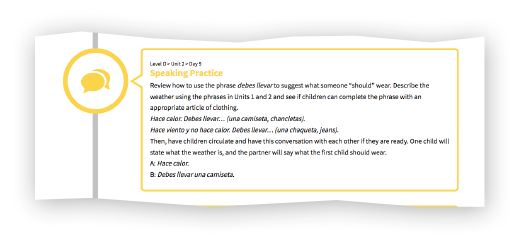
Novice Interpretive Statement
I can present information on both very familiar and everyday topics using a variety of practiced or memorized words, phrases, and simple sentences through spoken, written, or signed language.
Throughout the Calico Spanish curriculum, children are encouraged to use their new Spanish skills to present information to classmates, friends, or family.
Level A:
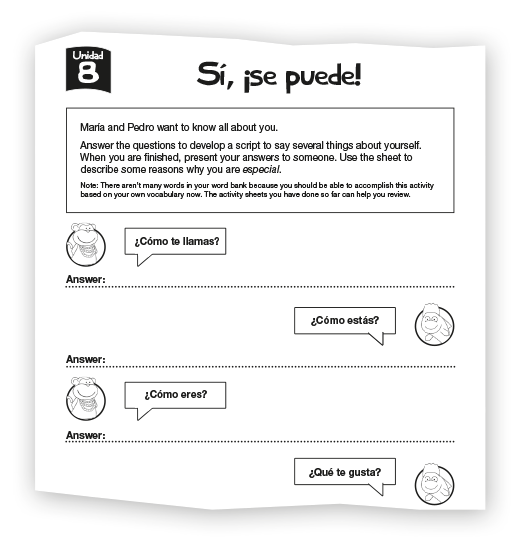
Level B:
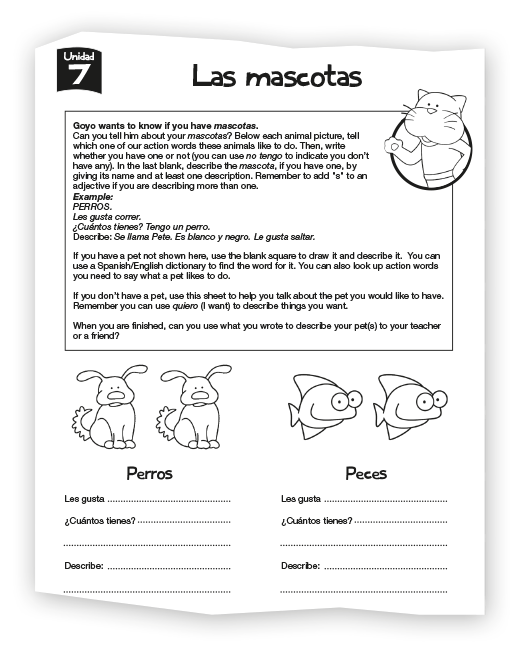
Level D:

Does the Calico Spanish curriculum align to the Intercultural Communication standards?

NCSSFL-ACTFL Can-Do Statements for Intercultural Communication:
 Investigate
Investigate
In my own and other cultures I can identify products and practices to help me understand perspectives.
 Interact
Interact
I can interact at a survival level in some familiar everyday contexts.
-
- The Calico Spanish curriculum includes several types of cultural content embedded within video stories:
-
- Language features, such as when calendars begin with Monday and use lowercase letters for days of the week
- Information about places, such as when characters encounter a monarch butterfly migrating to Mexico
-
Also, each level of Stories includes rich, inquiry-based Culture Capsules intended to get children asking deep questions about the products, practices, and perspectives of the Spanish-speaking peoples. The goal is for children to be able to interact in Spanish in a way that shows intercultural communicative competence.
Level A:

Level B:
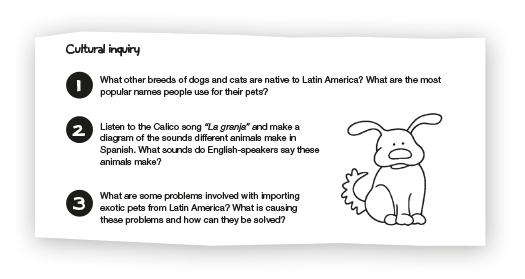
Level C:
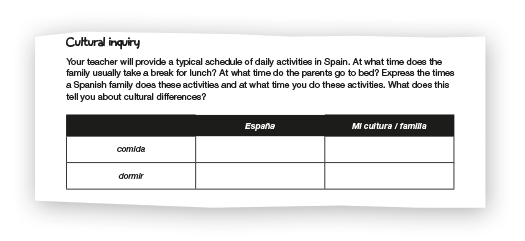
Level D:
